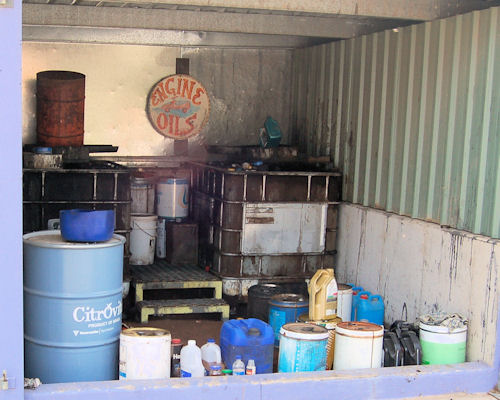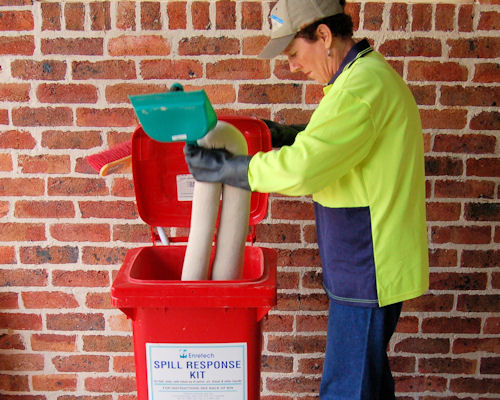Hazardous spills
 Audio for slide 1 (mp3 |6|KB)
Audio for slide 1 (mp3 |6|KB)
Some liquids are classified as hazardous because they have the potential to cause harm if they're stored or handled incorrectly.
The sorts of hazardous liquids that you're most likely to come across include:
- solvents, such as paint thinners, methylated spirits and mineral turpentine
- fuels, such as LP gas, petrol and diesel
- acids, such as battery acid or hydrochloric acid
- sealants and coating products.
Spills can be a real problem when they involve a hazardous substance. They should always be cleaned up straight away, no matter how small they are.

 Audio for slide 2 (mp3 |6|KB)
Audio for slide 2 (mp3 |6|KB)
Response for a small scale spill
The general response for a small scale spill is:
- Stop the source of the spill straight away, if it's safe to do so.
- Contain the spill, using the materials in a spill kit, if available, or by using sawdust or some other absorbent substance.
- Clean up the spill, in accordance with the Material Safety Data Sheet (MSDS).
- Store the clean-up waste in a sealed container.
- Contact a licensed waste contractor to take away the waste materials.

 Go to Assignment
Go to Assignment
